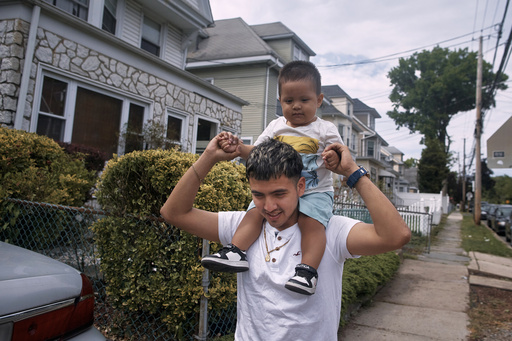President Trump has instructed ICE to focus on tracking down migrant children who arrived in the U.S. alone. This decision aligns with his commitment to solving America’s immigration problems. The move is part of a broader strategy to meet his tough deportation targets ahead of the next election. It shows the administration’s determination to take action on the border crisis.
ICE shifts focus to unaccompanied minors
In a recent internal memo, ICE agents were ordered to prioritize unaccompanied minors. The memo outlined a clear plan, starting with a “planning phase” on January 27. It will be followed by several more phases of action. The ultimate goal is to locate and deport these children quickly. This aggressive approach puts a significant focus on children crossing the border alone.
Executive order rolls back protections
Trump also signed an executive order aimed at rolling back key protections for migrants. The order allows ICE officers to arrest people in more places. Previously, certain locations, like schools, were off-limits for ICE agents. With this new directive, those restrictions have been lifted. This move is part of Trump’s broader push to tighten immigration control.
600,000 children cross without parents
Since 2019, over 600,000 immigrant children have crossed the U.S.-Mexico border alone. These children have arrived without their parents or any legal guardians. This alarming number has become a focal point in the ongoing debate over immigration. As a result, the Trump administration is intensifying efforts to address the situation.

New initiative targets children’s deportation
The new initiative, named the “Unaccompanied Alien Children Joint Initiative,” outlines ICE’s enforcement actions. Children who are targeted will receive a notice to appear in immigration court. If they have deportation orders, they will be removed from the country immediately. This fast-tracked approach is designed to speed up the deportation process for unaccompanied minors.
Prioritizing ‘flight risks’ and safety threats
ICE will focus its resources on children who are deemed a “flight risk.” This includes minors who missed court hearings or were released to sponsors who are not direct relatives. These children will be prioritized for deportation. In addition to flight risks, children who pose a threat to public safety or border security will also be targeted. The plan aims to address all potential risks posed by these minors.
Trump expands access to ORR database
The Trump administration has gained expanded access to the Office of Refugee Resettlement’s (ORR) database. This allows ICE to track the locations of children and their sponsors after the minors leave ORR custody. Previously, once children were placed with sponsors, their whereabouts were not tracked. This change could significantly impact the ability to locate these children and their sponsors.
Targeting sponsor households
Under the new policy, ICE is now able to target sponsor households for enforcement actions. Sponsors are often undocumented, or they may know other undocumented immigrants. By accessing ORR’s database, ICE agents can identify these sponsors and carry out arrests. The expanded reach will also allow for greater scrutiny of potential sponsors and their families.
In an effort to tighten control, Trump has increased scrutiny of potential sponsors. Now, sponsors and all adult members of their households must submit fingerprints for background checks. This measure is designed to ensure that sponsors are vetted thoroughly before children are placed in their care. It is part of a broader push to ensure that no undocumented individuals are slipping through the cracks.
Trump’s frustration with slow arrests
Despite these aggressive measures, Trump is reportedly frustrated with the pace of arrests. Border crossings have dramatically dropped since his inauguration, with fewer than 300 illegal crossings happening daily. However, the president is pushing for quicker deportations. He wants ICE to ramp up its efforts to meet his ambitious goals.
‘Missing’ children during Biden’s Administration
Tom Homan, Trump’s border czar, claimed that over 300,000 undocumented children went “missing” during the Biden administration. He suggests that these children are at risk of being trafficked or exploited. The majority of these children, he says, are from Central America and Mexico. This concern has intensified calls for stricter enforcement to prevent further harm.
ICE director reassigned
In response to criticism over slow arrests, Trump reassigned Caleb Vitello, the acting ICE director. This shake-up signals a renewed focus on speeding up immigration enforcement. With the pressure mounting to meet deportation targets, the Trump administration is making changes to ensure that ICE can carry out its mission effectively.
Trump’s directive to ICE marks a major escalation in efforts to address illegal immigration. With new plans in place to track down and deport unaccompanied minors, the administration is pushing forward with its hardline immigration stance. The focus is clear: locate and remove these children swiftly, while also targeting their sponsors. As Trump prepares for the next election, the pressure is on to meet his ambitious deportation targets.